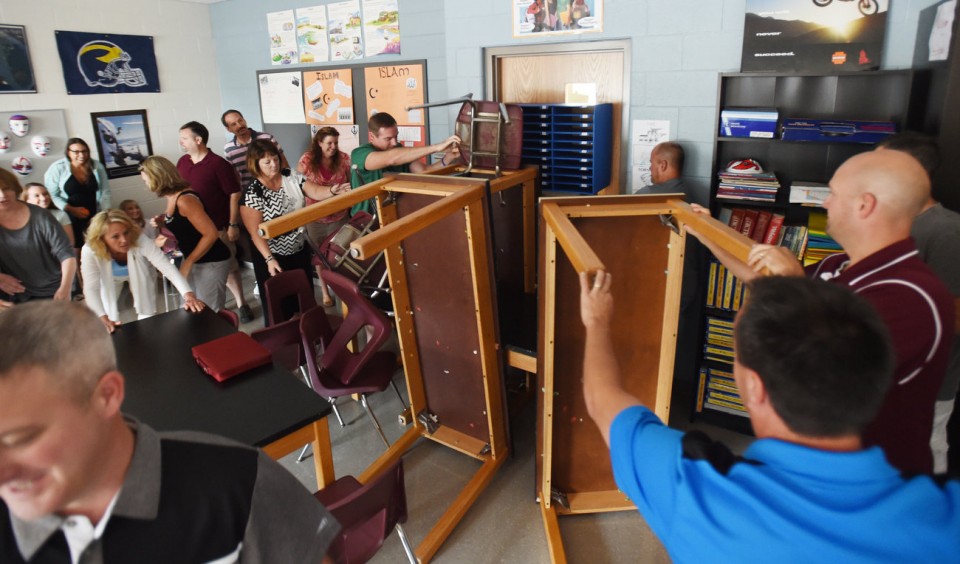Active shooting situations are on the rise, a report from the government shows a huge increase since early 2000, happening in over 40 states. One of the scariest parts of these attacks is that there is no warning before they happen, so the only safety measure is preparation, both physically and mentally.
It is especially important to be aware of the possibility of being involved in such an attack if you work in a public institution. Schools, theaters, churches, and hospitals are preferred targets as they are publically accessible and populated.
The Value of Defensive Training
Learning how to react in these kind of situations comes down to simple biology. Let me explain how it works.
When our brains’ interpret an event as stressful they jump into fight-or-flight response. Now, this is something that we all know. However, the biology behind this is what we need to understand.
It takes a lot of energy and nutrients to keep our brains functioning and the most costly part of that consumption is via the frontal lobe where we think. Rational examination of events and careful analysis of what to do in those situations is needed to pick the best reaction or course of action.
The problem is when we experience an event that is terrifying or dangerous, the front part of our brains immediately shuts off and we are left with only our instincts. There is no time to reflect or think about the best course of action and we often end up choosing badly.
The process of tactical conditioning is about learning how to stop this response and keep our minds alert and within the functional “thinking” zone. We want to stay calm, collected and most importantly – thinking.
The best way to do that is through systematic conditioning. Gradually conditioning one’s mind and body to the stresses both physically and mentally of combat training can help pick the best course of action within an emergency situation.
Let’s take a look at a few of these.
How to Train for Emergency Situations
Strength Training
Strength training builds two important things. First, explosive strength that is vital if you need to exit an area quickly, pick up an injured companion or fight to save your life. Second, mental strength is a byproduct of years in the gym pushing past your physical boundaries and comfort level.
Muscular endurance is another area where you should focus more of your attention. Being able to push or lift heavy weights is great for explosive development but without proper training of your muscular endurance you’re going to end up tired pretty soon. I recommend a 50/50 split between the two. Working on building strength that you can use and that can also last.
Couple of Exercises that Help With These:
- Burpees
- Sprints
- Deadlifts
- Squats
- Turkish Getups
- Rope Training
Speed
Learning how to move quickly and effectively can be a life saving skill to have. This requires movement training as well as endurance training so that you’re able to move at high speed for at least fifteen minutes.
Couple of Exercises to Help With This
- Sprints
- Weighted Sprints
- Skipping
Martial arts
Even basic training in martial arts can give you a huge advantage. It sure helped the brave men who stopped the train attacker in the Amsterdam-Paris train. Their knowledge of jiu-jitsu helped immobilize and disarm the terrorist. If your workplace prevents you from having a gun, this is the most realistic way you can be ready to face danger.
As an added benefit, training in martial arts requires excellent overall physical conditioning.
Awareness
Perhaps the most important item in saving your life is knowing your options at each moment. You should be aware of your surrounding environment and how to escape as quickly as possible. When you are in a new place, spend a few moments to identify possible escape routes.
Avoid losing yourself in your cell phone and spending too much time on social media. Keep aware of what is going on around you.
Should you carry a gun?
For institutions where you can CCW, one of the best options is an inside the waistband (IWB) holster made from Kydex, molded perfectly for your pistol of choice.
Final Thoughts
The most important lesson to take away from all of this is preparation.
This means being prepared both mentally and physically for any and all possible situations. It’s not enough to just head to the range and practice shooting. You need to be physically fit, know your location and constantly stay aware of any situations that might arise.
